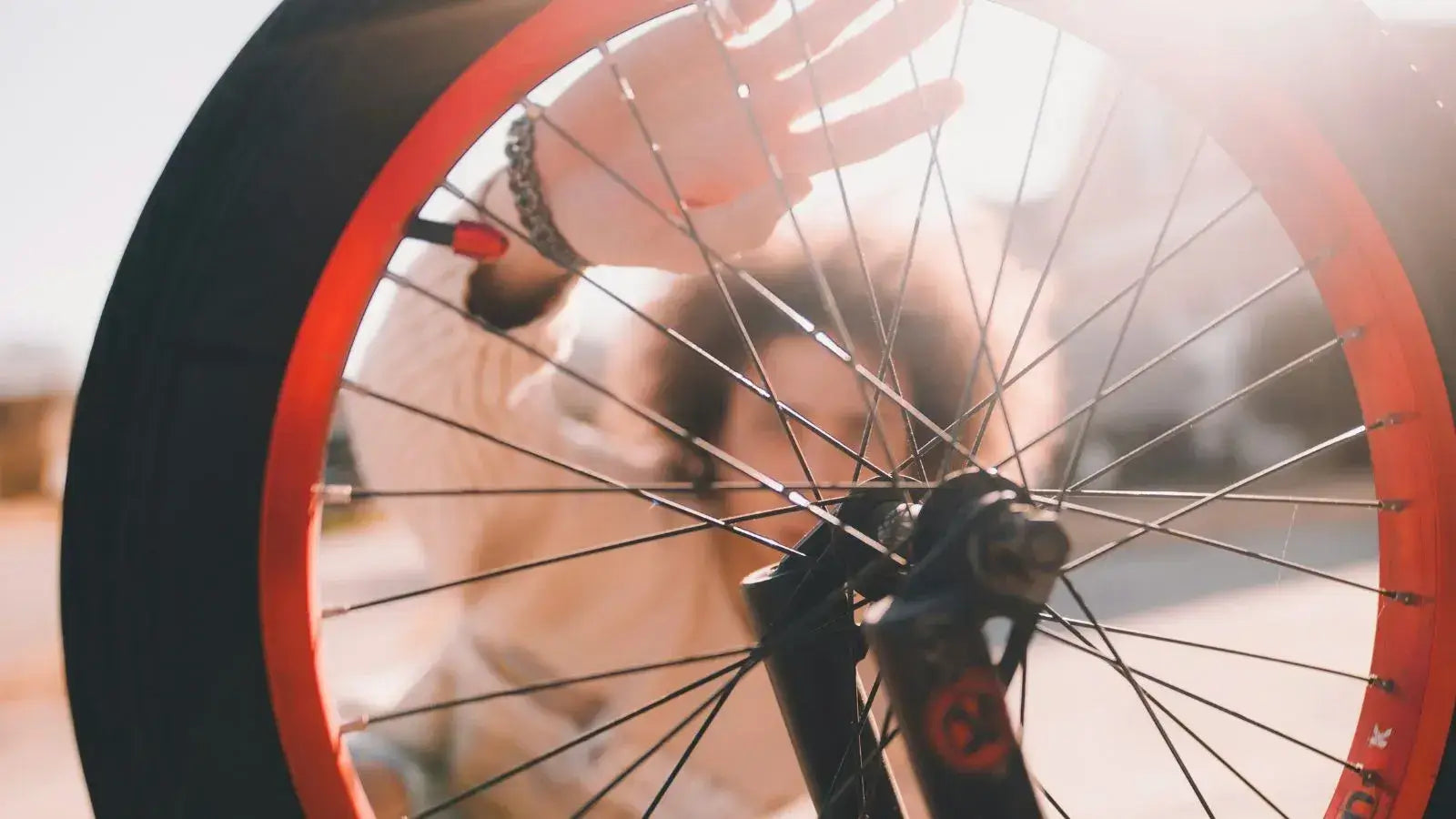
Fat Tire vs Narrow Tire: Choosing the Right Adult Electric Bicycle for Your Terrain
Introduction
Your quest for the ideal adult electric bicycle often hinges on a critical decision: fat tires or narrow tires? This choice significantly impacts your riding experience. It directly influences comfort, performance, and where you can confidently pedal. We understand that choosing between fat and narrow tires can be overwhelming.
The basic trade-off is simple. Fat tires offer unmatched versatility and cushioning, especially on varied or rugged terrain. Narrow tires provide efficiency and agility, performing best on smoother, paved surfaces. There is no single "best" tire. The "right" choice depends on your individual needs, how you plan to use your e-bike, and the main terrains you'll ride on. We're here to help guide your decision.
This article will explore both fat and narrow tires in detail. We'll discuss their strengths, weaknesses, ideal uses, and help you determine which option best suits your needs, ensuring you make an informed choice. For adult electric bicycles, "fat tires" typically means tires 4 inches wide or broader, with large air volume. "Narrow tires" generally refer to those under 2.5 inches, common on road, hybrid, and some lighter mountain e-bikes.
Understanding the Contenders: Fat Tires vs. Narrow Tires at a Glance
Before we dive into details, let's establish a clear overview of fat and narrow tires on adult electric bicycles. This quick comparison will give you a foundation for understanding the differences.
Fat tires on an adult electric bicycle are instantly recognizable by their substantial width. They typically measure 4 inches or more, sometimes exceeding 5 inches. Their visual impact is impressive – a large volume of rubber creating a wide contact patch with the ground. This significant size is key to their performance.
Narrow tires on adult electric bicycles are much slimmer. Their width usually falls below 2.5 inches, with road-specific e-bikes sometimes using tires as narrow as 28-35mm (around 1.1 to 1.4 inches). They look sleek and less aggressive, designed for lower rolling resistance and better aerodynamics. Hybrid and commuter e-bikes often use moderately narrow tires, perhaps 1.5 to 2.2 inches.
Key Differences: A Quick Comparison
To make this clearer, here's a side-by-side comparison highlighting the core differences relevant to your e-bike choice.
| Feature | Fat Tires | Narrow Tires |
| Typical Width | 4.0 inches and above | Below 2.5 inches (road, hybrid, some MTB) |
| Ideal Terrain | Sand, snow, mud, loose gravel, rough trails | Paved roads, bike paths, smooth hardpack |
| Primary Advantage | Stability, cushioning, all-terrain grip | Speed, efficiency, agility |
| Primary Disadvantage | Heavier, slower on pavement, higher effort | Less capable off-road, less cushioning |
| Rolling Resistance | Higher | Lower |
| Weight | Heavier | Lighter |
| Comfort (General) | Higher (acts as suspension) | Lower (transmits more vibration) |
This table provides a snapshot. Now, let's explore each type in more detail.
Deep Dive into Fat Tire Adult Electric Bicycles
Fat tire adult electric bicycles have carved out a significant niche, and for good reason. They promise go-anywhere capability and a unique riding feel. But are they the best choice for every rider and every terrain?
The appeal of fat tires is based on several key performance benefits. These advantages make them very attractive for specific types of riding and riders.
The most praised benefit is exceptional traction. That wide contact patch means more rubber gripping the surface, providing stability across challenging terrains like sand, snow, mud, loose gravel, and uneven trails. This is basic physics at work. The enhanced grip gives you more control, especially where narrower tires would struggle or slip. You can confidently power through loose sections with less worry.
Fat tires, typically run at lower pressures (often 5-20 PSI compared to 40-100+ PSI for narrow tires), act as natural suspension. They absorb bumps, ruts, and vibrations from the ground very well. On a recent ride along a gravelly river path, the fat tires on our test e-bike soaked up the vibrations much better than expected. The ride was surprisingly smooth, especially compared to riding similar paths with narrow-tired bikes. This means less fatigue and more comfort, particularly on longer rides over rough surfaces.
Their ability to handle diverse surfaces makes fat tire e-bikes true all-weather, all-season machines. Snow and ice, which would stop most narrow-tire bikes, become rideable. This versatility allows for year-round cycling, even in regions with harsh winters or for adventurers who don't mind a little mud.
The stability of fat tires can be a huge confidence booster. For new e-bike riders or those who feel less steady, the broader base provides a greater sense of security. This feeling of safety makes tackling rougher paths or unpredictable surfaces less intimidating, encouraging riders to explore more.
Potential Downsides of Going Fat
Despite their impressive capabilities, fat tires come with trade-offs. It's important to understand these before committing to an e-bike with them.
Heavier Weight
Fat tires and the robust wheels they require add significant weight to an e-bike. This affects portability if you need to lift your bike regularly (onto a car rack, up stairs).
The extra mass also impacts handling, making the bike feel less nimble, especially at very low speeds or when moving the bike without power. The added weight can slightly reduce battery range due to the increased effort needed to move the heavier wheels.
Increased Rolling Resistance
That large contact patch, while great for grip, creates more friction with the ground. This increased rolling resistance makes fat tires slower and require more effort (from you or the motor) on smooth pavement. While the exact numbers vary based on tire pressure, tread, and width, it's a known trade-off: the increased contact patch and tire flex lead to higher rolling resistance. You'll likely notice this if you ride mainly on paved roads.
Less Agile/Responsive Steering
The weight of heavier, wider wheels means fat tire e-bikes can feel less agile. Steering may seem slower or more deliberate compared to the quick responsiveness of narrow tires. This is most noticeable in tight turns or when trying to make quick direction changes, such as navigating around urban obstacles.
Potentially Higher Cost
Fat tire e-bikes can sometimes cost more due to specialized components like wider frames, forks, and rims. Replacement fat tires also tend to be more expensive than standard narrow bike tires.
Noise Levels
On smooth pavement, the tread patterns and size of fat tires can generate more road noise than narrower, smoother tires. This may or may not matter to you, but it's a noticeable difference.
Best Terrains for Fat Tire E-Bikes
Fat tire e-bikes truly shine and are often the best choice for:
-
Snow-covered paths and roads
-
Sandy beaches or desert trails
-
Muddy tracks and boggy areas
-
Technical off-road trails with roots, rocks, and loose surfaces
-
Very rough, unpaved roads or poorly maintained tracks
-
Deep gravel paths where narrower tires might sink
Who is a Fat Tire Adult Electric Bicycle For?
Consider a fat tire e-bike if you are:
-
An off-road adventurer seeking to explore challenging and varied terrains
-
An all-weather commuter, especially in regions with significant snow or ice
-
A rider prioritizing maximum comfort and cushioning over speed on mixed surfaces
-
A heavier rider who would benefit from the increased support, stability, and tire volume
-
Someone who values ultimate stability and confidence, perhaps new to e-biking or less confident on two wheels
-
A rider who wants one e-bike to handle the widest possible range of conditions, accepting a compromise on pure pavement speed
The Efficiency Experts? Exploring Narrow Tire Adult Electric Bicycles
Narrow tire adult electric bicycles are the traditional champions of speed and efficiency on paved surfaces. They offer a distinctly different riding experience compared to their fat-tired counterparts.
For many riders, particularly those sticking primarily to roads and bike paths, narrow tires present a compelling set of benefits.
This is the hallmark of narrow tires. Their smaller contact patch and often smoother tread patterns result in significantly lower rolling resistance on pavement. This means your e-bike will accelerate faster, maintain higher speeds with less effort (from you or the motor), and generally feel more responsive on smooth surfaces. Battery range often benefits too.
Narrower, lighter tires contribute to quicker, more responsive handling. Steering feels more direct and nimble, making it easier to navigate city traffic, weave through obstacles, or enjoy spirited rides on winding paths. The bike feels more connected to the road, responding instantly to rider input.
Generally, e-bikes equipped with narrow tires are lighter overall. The tires, tubes, and rims themselves weigh less, contributing to an e-bike that's easier to lift, carry up stairs, or load onto a vehicle. This reduced weight also contributes to the feeling of agility and can positively impact battery efficiency.
While not always true, e-bikes with narrow tires, particularly entry-level to mid-range commuter or hybrid models, can sometimes be more affordable. Replacement narrow tires are also generally less expensive and more widely available in a vast array of options.
Limitations to Consider with Narrow Tires
The strengths of narrow tires on pavement become their weaknesses when the terrain gets more demanding.
This is the main drawback. Narrow tires have a smaller contact patch, offering less grip on sand, snow, mud, loose gravel, or very uneven trails. They are generally not suitable for serious off-roading. Even on wet, smooth surfaces like manhole covers or painted lines, some narrow tires (especially slick ones) can be more prone to slipping if the tread isn't designed for wet conditions.
With less air volume and typically higher pressures, narrow tires transmit more shock and vibration from road imperfections directly to the rider. Potholes, cracks, and rough patches will be felt more acutely, potentially leading to a less comfortable ride, especially over longer distances on poor quality pavement.
While many modern narrow e-bike tires have robust puncture protection layers, their lower air volume can, in some cases, make them slightly more susceptible to pinch flats if ridden at too low a pressure over sharp edges. However, high-quality, purpose-built narrow e-bike tires often minimize this risk very well. It's also true that any tire can puncture from road debris.
Best Terrains for Narrow Tire E-Bikes
Narrow tire e-bikes are in their element on:
-
Paved roads and city streets
-
Dedicated asphalt bike paths and greenways
-
Smooth, well-maintained hardpack dirt or fine gravel paths (especially with wider narrow tires, e.g., 38-45mm, and some tread)
Who is a Narrow Tire Adult Electric Bicycle For?
A narrow tire e-bike is likely your best choice if you are:
-
An urban commuter primarily focused on speed, efficiency, and agility for navigating city environments
-
A road cycling enthusiast looking for an e-bike to extend range and tackle hills on paved routes
-
A fitness rider using paved trails and roads for exercise
-
Someone prioritizing a lightweight design for easier handling, transport, and storage
-
A rider whose routes are almost exclusively on smooth, predictable surfaces. As noted in guides like Consumer Reports' e-bike buying guide, e-bikes designed for road use or commuting often feature narrower tires to maximize efficiency and range on pavement.
Beyond the Obvious: Real-World Scenarios – Which Tire Wins for Your Adult Electric Bicycle?
General pros and cons are helpful, but the real test is how these tire choices perform in your world. Let's apply the fat vs. narrow tire decision to specific, real-life user scenarios for your e-bike.
Scenario 1: The Daily Urban Commuter
-
Terrain Profile: Mostly paved roads, bike lanes, city streets. Occasional potholes, minor road debris, or short stretches of construction zones.
-
Priorities: Efficiency to cover distance quickly, speed to keep up with traffic flow (where appropriate), agility for navigating traffic and obstacles, reliability day-in and day-out.
-
Analysis: Narrow tires excel in efficiency and agility on pavement. Fat tires would feel sluggish and use more battery for the same commute. However, poor road quality or frequent rain could suggest wider tires.
-
Recommendation & Nuances: For most urban commuters, a narrow tire (perhaps 1.5 to 2.0 inches for a balance of speed and some pothole resilience) is ideal. If your city has very bad roads or you ride in all weather including light snow, a wider "urban" fat tire (3-inch) or a robust, wider narrow tire with good tread could be considered for better comfort and grip, with a slight loss in pure efficiency.
Scenario 2: The Weekend Off-Road Adventurer
-
Terrain Profile: Forest trails, singletrack, gravel fire roads, moderate hills, potential for mud, sand patches, roots, and rocks.
-
Priorities: Maximum traction for climbing and descending, stability on uneven and loose surfaces, comfort to absorb bumps over long rides, durability to withstand trail abuse.
-
Analysis: This is prime fat tire territory. The superior grip and cushioning of fat tires (4 inches or wider) are essential for confident and enjoyable off-roading. Narrow tires would limit where you could go and how much fun you'd have, likely struggling for grip and offering a harsh ride.
-
Recommendation & Nuances: Fat tires are the clear winner here. For those who mix serious trail riding with some road to get to the trails, "plus" tires (around 3 inches, discussed later) might offer a compromise, but for dedicated off-roading, full fat is generally best on an e-bike.
Scenario 3: The All-Weather, All-Terrain Explorer
-
Terrain Profile: A true mix: city streets during the week, park paths with gravel or dirt, sandy beach access points on weekends, perhaps even snowy trails in winter. Ambition to ride almost anywhere, anytime.
-
Priorities: Maximum versatility above all else, all-season capability, dependable comfort across a wide range of surfaces, ability to handle unpredictable conditions.
-
Analysis: The trade-offs are most critical here. Narrow tires excel on pavement but fail in snow or deep sand. Fat tires handle everything but are slower on pure asphalt.
-
Recommendation & Nuances: This scenario strongly leans towards fat tires. The ability to navigate diverse and challenging conditions outweighs pavement efficiency for this rider. We once took a fat tire e-bike on a multi-day trip that spanned paved coastal roads, sandy beach access paths, and light forest trails. While a bit slower on the pure asphalt sections, its ability to confidently handle the sand and uneven trails without a second thought made it the ideal companion for such a varied adventure. A fat tire with a less aggressive, faster-rolling tread pattern can help reduce the on-road drag slightly.
Scenario 4: The Leisurely Rider & Senior Cyclist
-
Terrain Profile: Predominantly smooth bike paths, parkways, residential streets. Relatively flat and well-maintained surfaces.
-
Priorities: Ultimate comfort, maximum stability and confidence, ease of use, low-impact exercise. Speed is usually not a primary factor.
-
Analysis: Both tire types have merits. Fat tires offer supreme cushioning and a very stable, reassuring ride. Wider narrow tires on an e-bike with good frame suspension can also be very comfortable and easier to manage in terms of weight.
-
Recommendation & Nuances: For maximum stability and a "cloud-like" ride, fat tires (perhaps 3-4 inches) are excellent. They inspire confidence, especially for those new or returning to cycling. Alternatively, a comfort-oriented e-bike with wider narrow tires (e.g., 2.0-2.4 inches) combined with features like a suspension seatpost and front suspension fork can also provide a very plush and stable experience, often with slightly less overall weight. Low step-through frames pair well with either tire choice for easy mounting and dismounting.
Scenario 5: The Heavy Rider or Cargo Hauler
-
Terrain Profile: Varies depending on use, but the key is stability and support under significant load. Could be urban delivery routes or hauling gear on trails.
-
Priorities: High weight capacity, unwavering stability, durable construction, reliable traction under load.
-
Analysis: Wider tires distribute weight over a larger area, reducing strain on the tire and rim and enhancing stability. Fat tires inherently offer a larger air volume, providing better support for heavier loads.
-
Recommendation & Nuances: Fat tires (4 inches or more) are generally preferred for their superior load distribution, stability, and robust nature. For very heavy riders or substantial cargo loads (e.g., on a cargo e-bike), fat tires provide the necessary support and resilience. If fat tires are not an option, then the widest and most robust narrow tires available, run at appropriate pressures, are essential. Always check the e-bike's manufacturer-specified maximum weight capacity (rider + cargo).
Key Factors Beyond Terrain When Choosing Your Adult Electric Bicycle Tires
While your primary riding terrain is a major influence, other important factors play a role in selecting the right tires for your e-bike. Overlooking these can lead to a less-than-ideal match.
Comfort Level
Beyond just the terrain's bumpiness, your personal preference for a plush ride versus a more connected, "sporty" feel matters. Some riders, regardless of terrain, simply prefer the maximum cushioning fat tires provide. Consider your own physical condition; if you have back or joint issues, extra cushioning is beneficial.
Fat tires, with their low pressures, excel here. Narrow tires rely more on bike suspension (if present) and rider posture for comfort.
Maintenance and Durability
A common myth is that fat tires are harder to maintain or more puncture-prone. In reality, quality fat tires are often quite robust. Their sheer size can sometimes shrug off debris that might puncture a thinner tire. However, fixing a flat on a heavy fat tire e-bike can be more cumbersome.
Tubeless setups are becoming more common for fat tires, reducing puncture risks and allowing even lower pressures. Narrow tires, especially those for commuters, often feature excellent puncture protection belts. Ultimately, maintenance is similar; it's more about tire quality and setup.
Impact on Battery Range & Efficiency
This is a significant factor for any e-bike. Wider, knobbier tires, especially fat tires, create more rolling resistance, which means the motor (and your legs) must work harder. This directly translates to reduced battery range compared to an identical e-bike with narrower, smoother tires ridden on pavement.
Wider, knobbier tires can reduce e-bike range by 5-20% or even more on average compared to narrower, smoother tires on pavement, according to various industry tests and physics principles, though exact figures depend heavily on specific tires, pressure, and terrain. If maximizing every mile per charge is critical, narrow tires have the edge on hard surfaces.
Portability and Storage
Fat tire e-bikes are generally heavier and bulkier. The wider tires and often wider frames can make them more challenging to lift onto car racks, carry up stairs, or fit into tight storage spaces. If you frequently transport your e-bike or have limited storage, the lighter weight and slimmer profile of a narrow-tired e-bike might be a significant advantage.
Cost Considerations
The initial purchase price of e-bikes can vary, but sometimes fat tire models carry a premium due to specialized components. More significantly, replacement fat tires are almost always more expensive than comparable quality narrow tires. Consider the long-term cost of tire replacement, especially if you anticipate riding many miles or on abrasive surfaces.
Noise
As mentioned earlier, fat tires, particularly those with aggressive tread patterns, tend to be noisier on pavement than slick or semi-slick narrow tires. For some, this is a minor point; for others, a quieter ride is preferable, especially for peaceful recreational rides or stealthy commuting.
Availability and Options
The market for e-bikes is vast. While fat tire e-bikes are very popular, you might find a wider selection of models, styles (e.g., lightweight road e-bikes, sleek urban e-bikes), and price points among narrow-tired options. However, fat tires are increasingly common across various e-bike categories, including cruisers, folders, and even some cargo bikes.

Exploring Nuances for Your Adult Electric Bicycle
The choice isn't always a stark binary between ultra-fat and super-slim. There are middle-ground options and ways to fine-tune your ride, offering sophisticated solutions for your e-bike.
Introducing "Plus" (Mid-Fat) Tires
Yes, a popular compromise exists: "Plus" or "mid-fat" tires. These typically range from 2.8 to 3.5 inches in width. They aim to bridge the gap between traditional mountain bike tires and full-fat tires.
Pros: Plus tires offer a noticeable improvement in traction and comfort over standard narrow mountain bike tires, especially on loose or moderately rough terrain. They roll better on hardpack and pavement than full 4-inch+ fat tires. They can be a sweet spot for many e-bike riders seeking versatility.
Cons: They may not provide the ultimate flotation of true fat tires in very soft conditions like deep snow or loose sand. The availability of e-bikes specifically designed for "plus" tires might be less extensive than for standard fat or narrow options, though many modern eMTBs embrace this size.
Who are they for? Riders who want more capability than a narrow tire for mixed-terrain adventures (light trails, gravel, rough paths) but find full fat tires too sluggish for their amount of pavement or hardpack riding.
Can You Swap Fat Tires for Narrow Tires on Your E-Bike?
This is a common question, but it's technically challenging and often not recommended without careful consideration.
-
Frame and Fork Clearance: Fat tire e-bikes have much wider frames and forks to accommodate the large tires. You could physically fit a narrow tire and wheel into a fat bike frame, but it would look odd and might negatively affect handling. Conversely, you absolutely cannot fit a fat tire onto an e-bike frame designed for narrow tires; there simply isn't enough space.
-
Rim Width Compatibility: Tire width and inner rim width must be compatible. A very narrow tire on an ultra-wide fat bike rim will not seat properly and will be unsafe. Similarly, a fat tire on a narrow rim is a recipe for tire roll-off and instability.
-
Impact on Geometry and Handling: Changing tire width and overall diameter significantly can alter your e-bike's bottom bracket height, head angle, and trail. This can drastically change the bike's intended handling characteristics, often for the worse. For instance, putting much smaller diameter narrow wheels/tires on a fat bike could lower the bottom bracket excessively, leading to pedal strikes.
When it might be (cautiously) feasible vs. not recommended: Swapping between similar width tires (e.g., a 2.1-inch tire for a 2.3-inch tire on a mountain bike if clearance allows) is usually fine. Going from a 4-inch fat tire to a 2-inch narrow tire on the same e-bike is generally not advisable unless the manufacturer specifically states the frame is designed for such versatility with different wheelsets (a rare feature). It's usually better to choose an e-bike designed for the tire type you'll use most.
The Importance of Tire Tread Pattern (Beyond Just Width)
Tire width is only part of the equation. The tread pattern plays a huge role in performance.
-
Knobby Treads: Large, spaced-out knobs are designed to dig into soft terrain like mud, loose dirt, and snow for maximum grip. They are noisy and slow-rolling on pavement.
-
Semi-Slick Treads: These have a smoother center strip for lower rolling resistance on pavement, with more aggressive shoulder knobs for cornering grip on looser surfaces. A good compromise for mixed-surface riding.
-
Slick Treads: Minimal or no tread pattern, designed for maximum efficiency and speed on smooth, dry pavement. Offer less grip on wet or loose surfaces.
You can find both fat and narrow tires with various tread patterns. For example, a fat tire with a less aggressive, more rounded tread will roll better on pavement than a super-knobby one. A narrow gravel tire (e.g., 40mm) will have small, tightly packed knobs for grip on dirt and gravel without being too slow on the road.
Considering Tire Pressure for Optimal Performance
Tire pressure is critical, especially for fat tires. Lowering pressure increases the contact patch, enhancing grip and comfort on rough terrain. Increasing pressure reduces rolling resistance on smoother surfaces.
For fat tires, experimenting with pressures between 5-20 PSI (or as per manufacturer recommendation) can dramatically alter the ride feel for different terrains. Narrow tires also benefit from correct pressure, but the adjustment range is smaller and higher. Always stay within the tire's recommended pressure range.
The Value of Test Rides
If possible, test ride e-bikes with both fat and narrow tires. From our experience, nothing beats a test ride. Feeling how an e-bike with fat tires handles corners, absorbs bumps, and accelerates versus one with narrow tires on familiar surfaces can instantly clarify which feels right for you and your intended use.
Pay attention to how each tire type influences the overall feel, handling, and comfort of the e-bike. This firsthand comparison is invaluable.
Conclusion
Choosing between fat tires and narrow tires for your adult electric bicycle is a significant decision, but it doesn't need to be overwhelming. The core principle remains clear: fat tires generally offer unmatched versatility, comfort, and traction for rough, loose, or varied terrain. Narrow tires excel in speed, efficiency, and agility on smoother, paved surfaces.
The "best" tire for your e-bike is entirely personal. It's the one that best matches your primary terrain, your riding style, your priorities, and your comfort. By carefully considering the factors we've discussed and, ideally, taking a few test rides, you can make an informed choice.
Ultimately, selecting the right tires means equipping your adult electric bicycle for the adventures you envision. Once you've found that perfect match, you're set to experience the unique joy and freedom that e-biking offers, with confidence in every pedal stroke.
FAQs
1. What is the main difference between fat tires and narrow tires on electric bicycles?
Fat tires (4+ inches) offer superior traction, stability and comfort on rough terrain, while narrow tires (under 2.5 inches) provide better speed, efficiency and agility on paved surfaces.
2. How do fat tires affect battery range on an electric bicycle?
Fat tires typically reduce battery range by 5-20% compared to narrow tires when riding on pavement due to increased rolling resistance and the additional weight of the tires.
3. Can I switch between fat and narrow tires on my existing electric bicycle?
This is generally not recommended as frames are specifically designed for certain tire widths. Significant changes could affect handling, safety, and may not physically fit your e-bike's frame.
4. Which tire type is better for commuting in an urban environment?
Narrow tires (1.5-2.0 inches) are typically better for urban commuting, offering improved efficiency, speed, and agility for navigating traffic and city streets.
5. Are there compromise options between fat and narrow tires for electric bicycles?
Yes, "Plus" or "mid-fat" tires (2.8-3.5 inches) offer a middle ground with better traction than narrow tires while providing more efficiency on pavement than full fat tires.



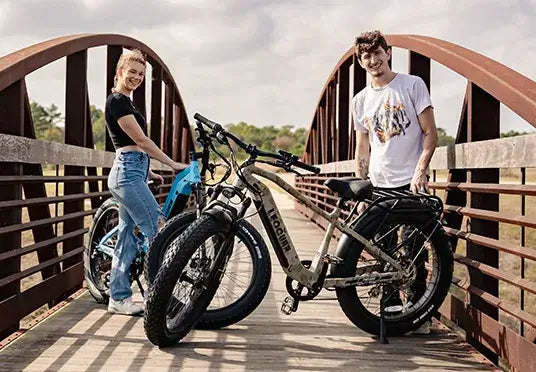
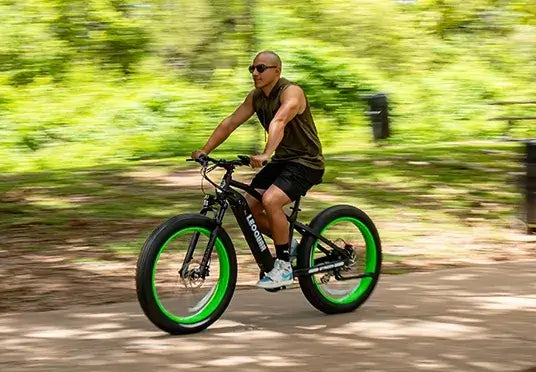
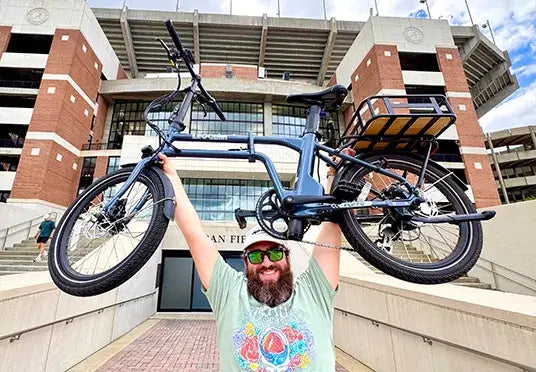
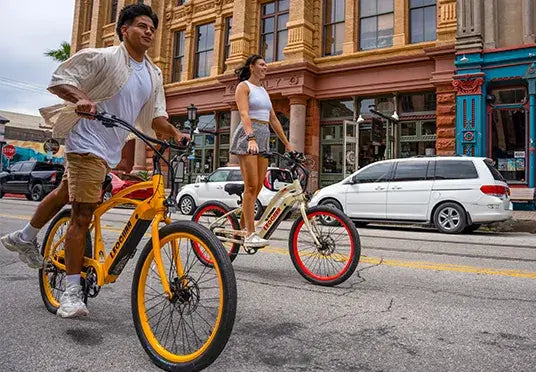
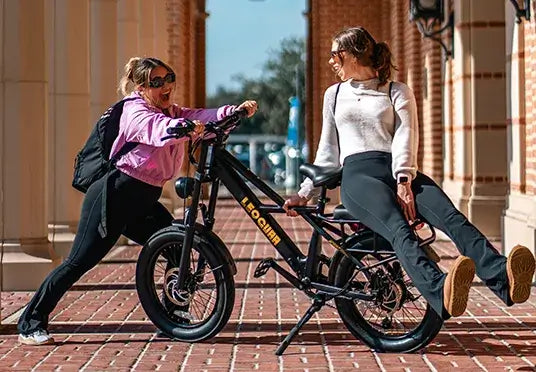
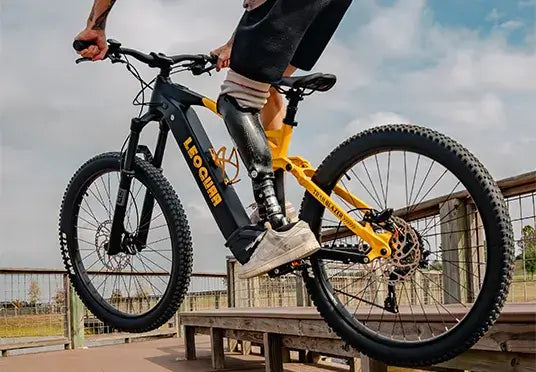
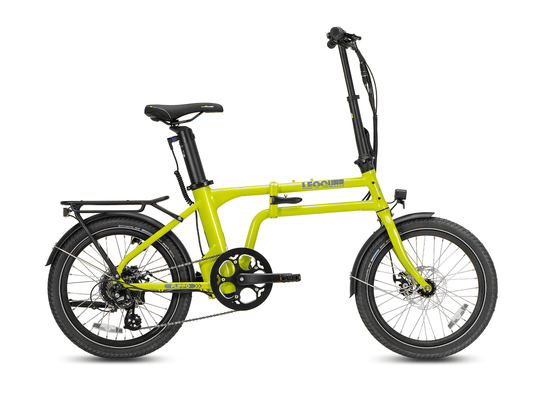
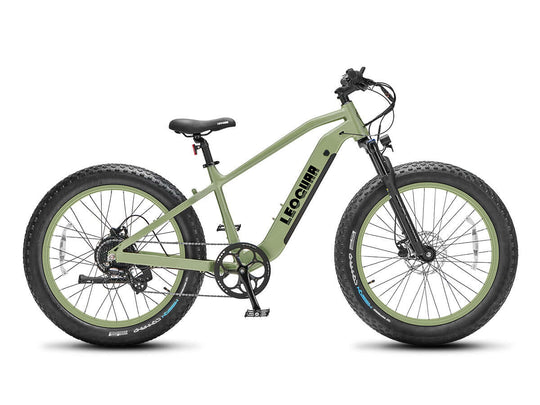
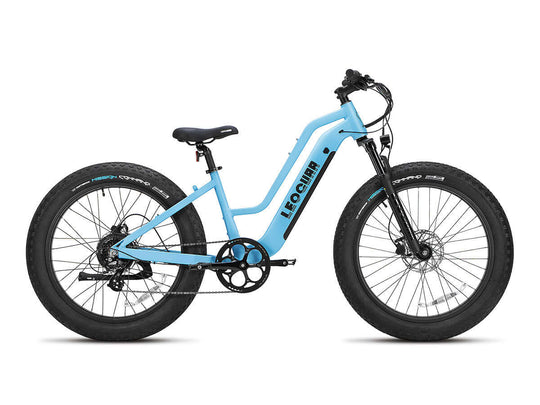
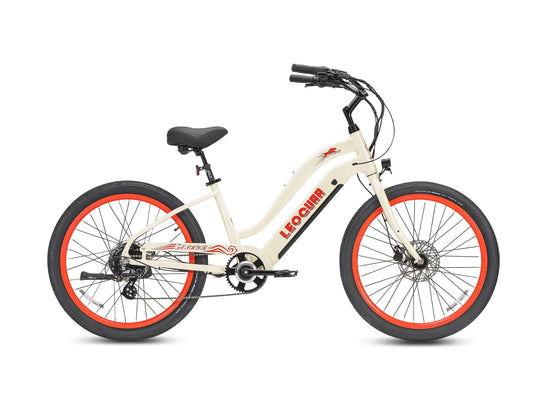
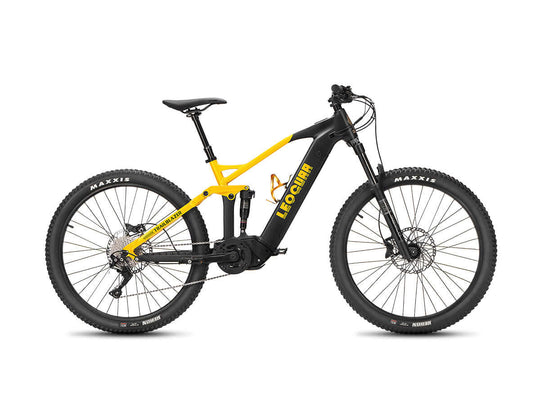
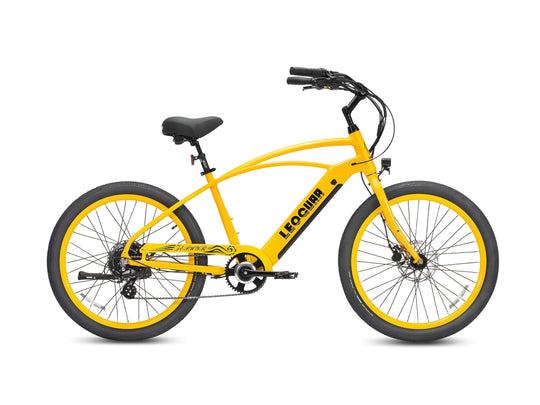
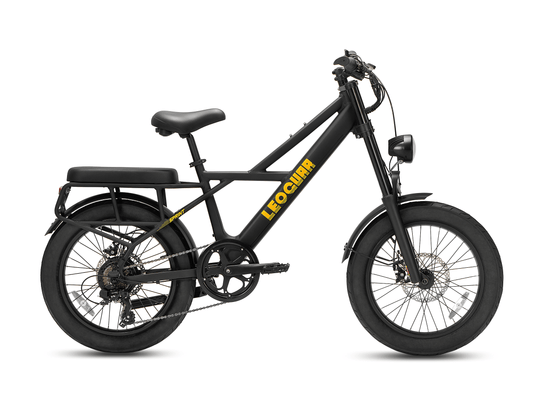
















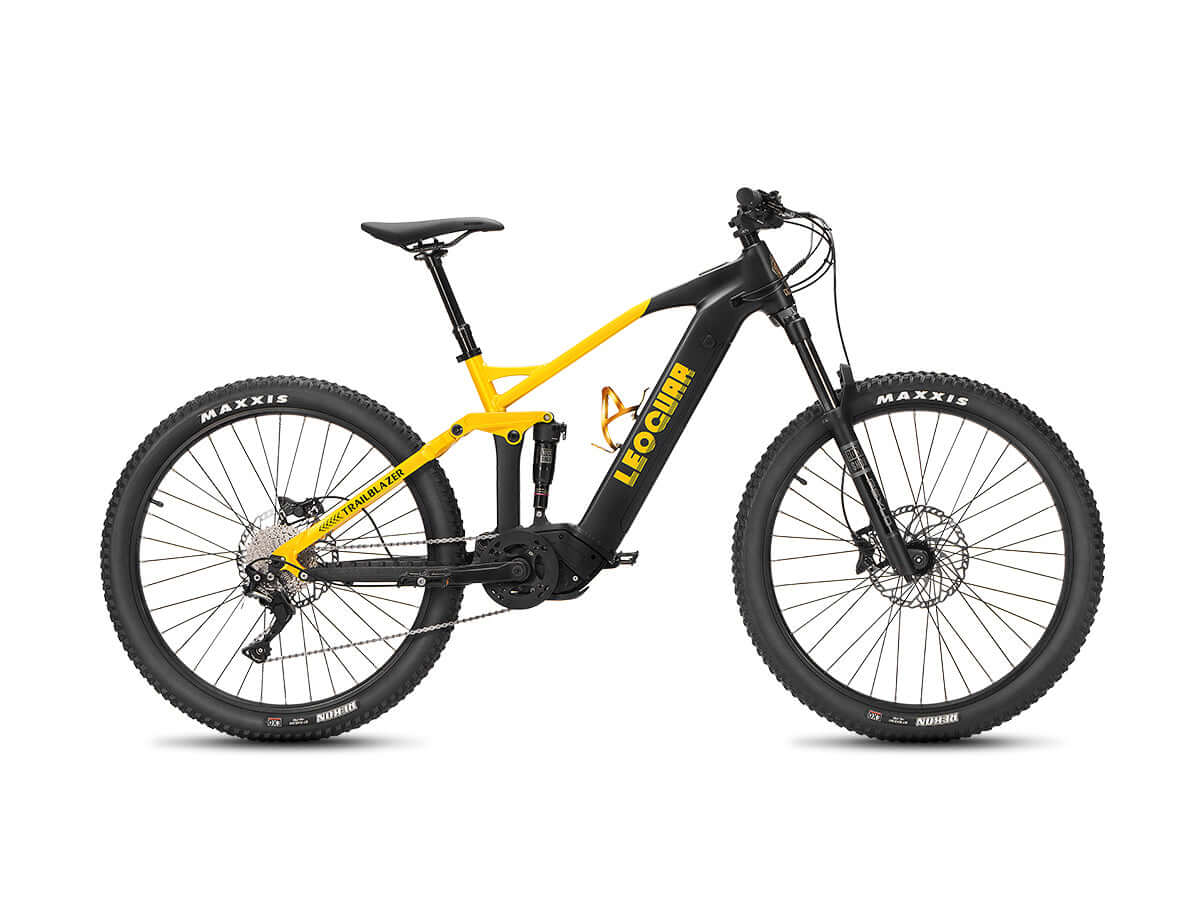








Leave a comment